2019.04.16 Tuesday Stretch

Cal here with Tuesday Stretch. I hope yesterday didn’t stretch your bank account when you filed or extended your income tax returns. Here I am with a second look at some stretch glass with diamonds, which may stretch your bank account if you find them for sale. Dave got us off to a good start two weeks ago and now I will show you even more stretch glass which contains the diamond motif. Keeping in mind that stretch glass was designed to emphasize the skills of the workers and the actual material used to make the object (in this case, that would be glass), the diamonds in stretch glass are primarily on the inside of the glass, placed there by a diamond design on the plunger during the molding process. Because the diamonds are on the inside, we refer to them as optic diamonds or diamond optic. They are more subtle than the impressed diamonds found in some other glass, including carnival glass. In some cases we are able to find the same item, same size, same color with and without the optic diamonds. I say “in some cases” because there are pieces which I do not believe are known without the diamond optic ‘embellishment.’ Enough for theory and academics, let’s look at some glass.
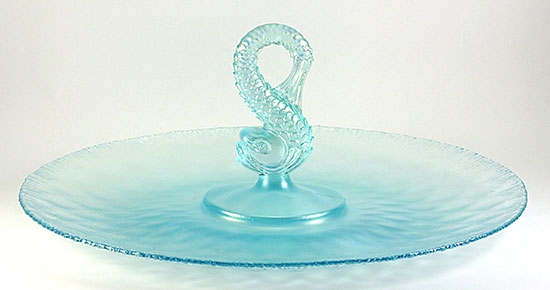
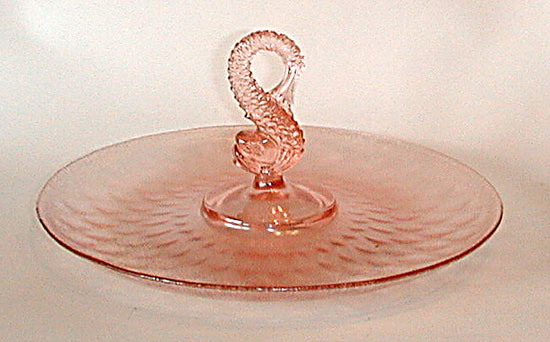
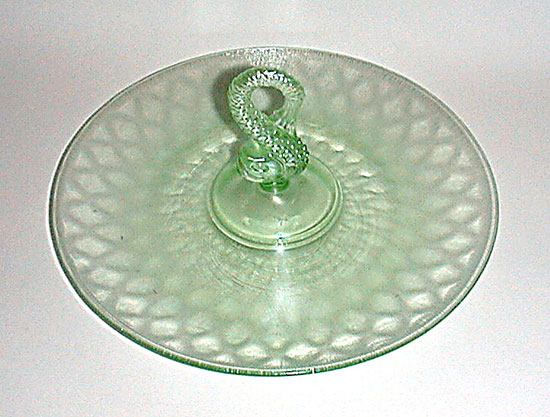
I’ll begin with one of my favorites, Fenton’s dolphins. While this line is well documented with and without the diamond optic, it is good to know when the diamond optic is more likely to be found versus when it is more difficult to find. It is never ‘easy’ to find an early period piece of stretch glass with both dolphins and diamond optics. In the early period dolphin center handled server, most of the known examples have the diamond optics. These pieces are hard-to-find in any of the known colors: Aquamarine, Florentine Green or Velva Rose. They are quite beautiful and are usually snatched up quickly when they are offered for sale. In this case, however, the ones WITHOUT the diamond optics are the harder-to-find examples.
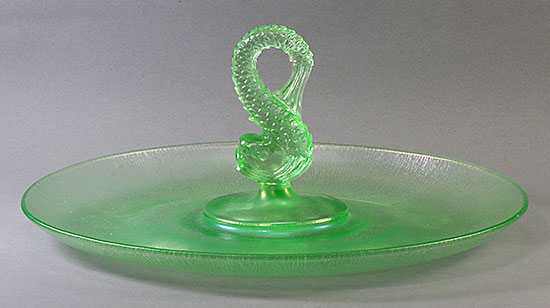
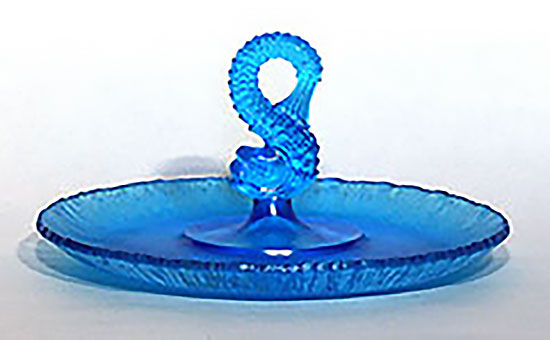
This is only true for the cookie or sandwich servers; the butterball tray with a dolphin handle is, to the best of my knowledge, only known without the diamond optics, so if you have one of those with diamond optics, we would like to see a picture of it! In the dolphin bowls, vases and comports, the examples with the diamond optics are the harder-to-find examples. In fact, finding ones with the diamond optic interior is quite a challenge. Here are some of the ones we have found:
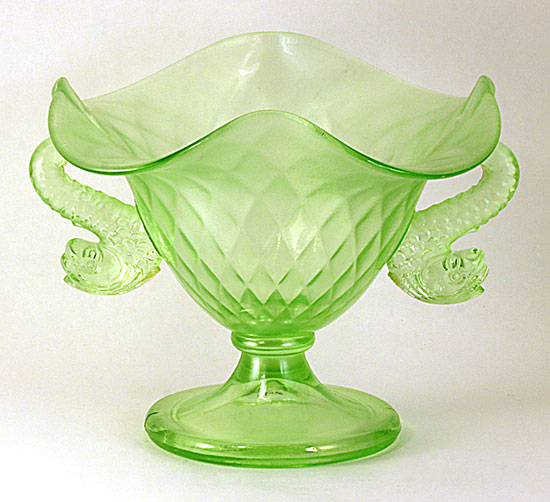
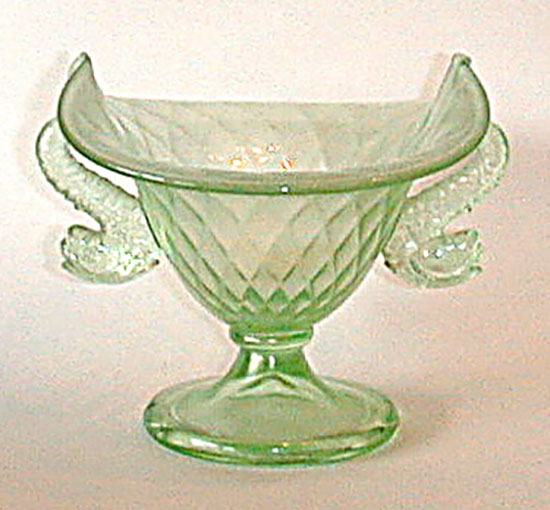
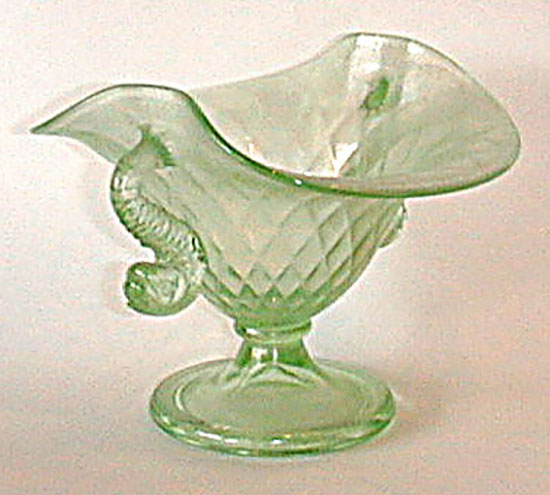
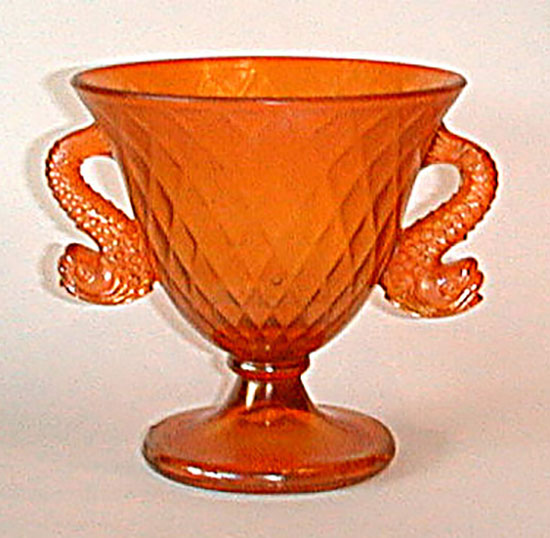
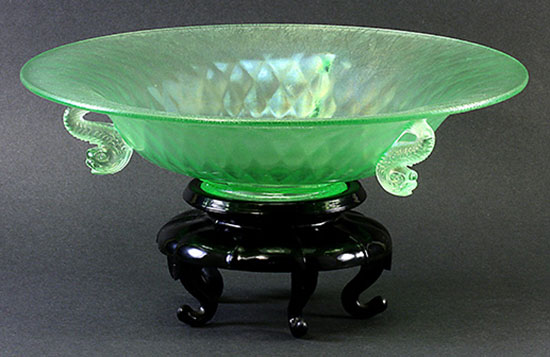
Fenton used two diamond optic designs on their plungers. The bigger one, as illustrated above, and one with much smaller, deeper diamonds. These smaller diamonds appear on the interior of only a few items. As we saw earlier this month, they are found on the inside of a powder puff jar and a short cologne. They are also found on a small fan vase and a small candy jar.
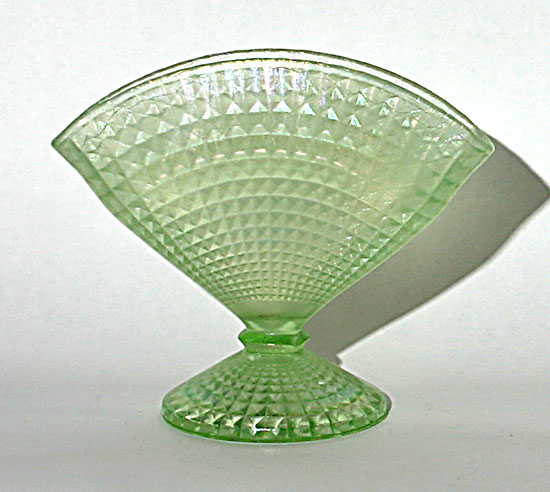
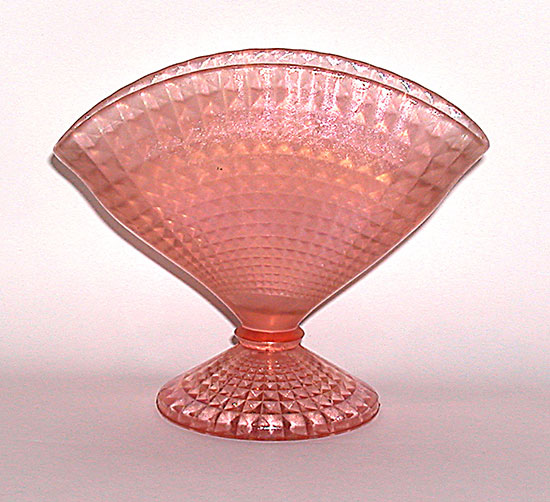
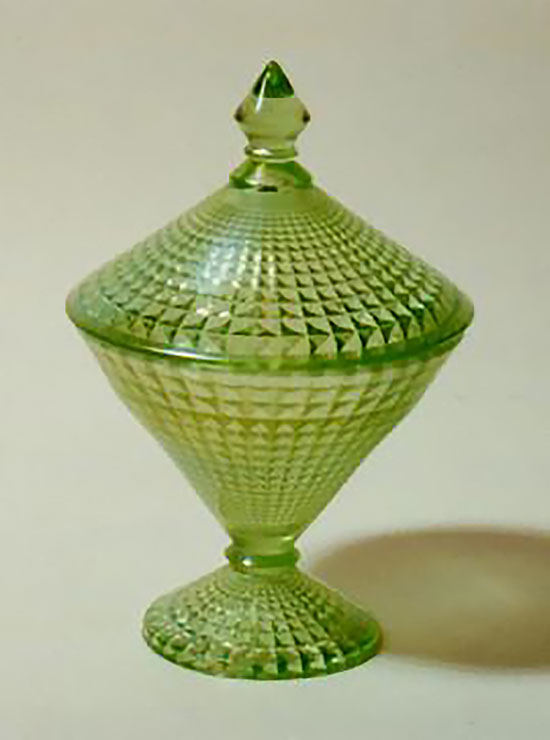
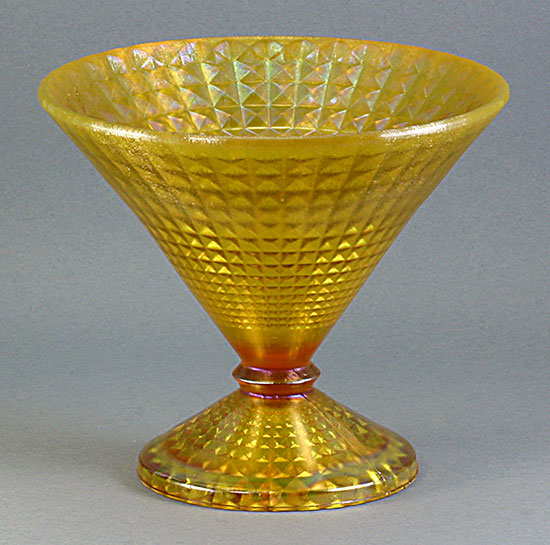
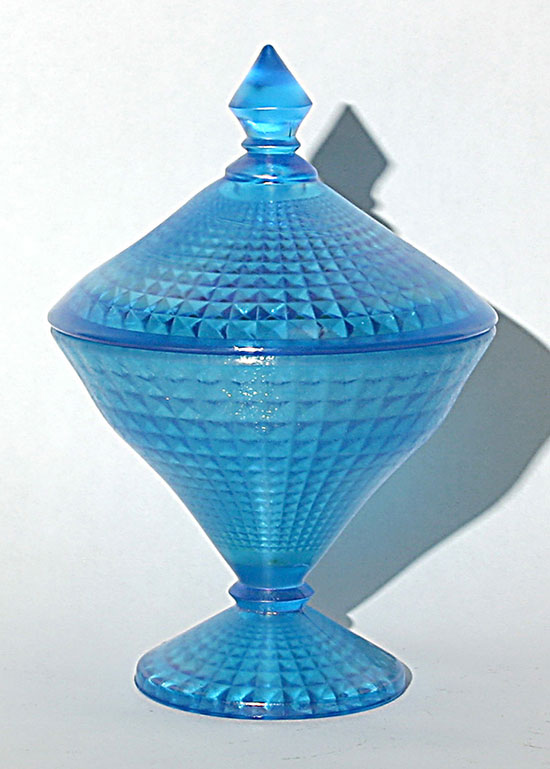
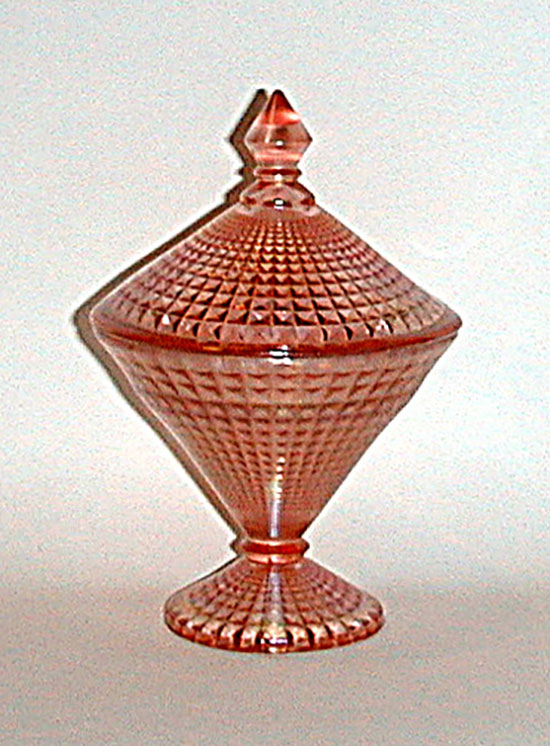
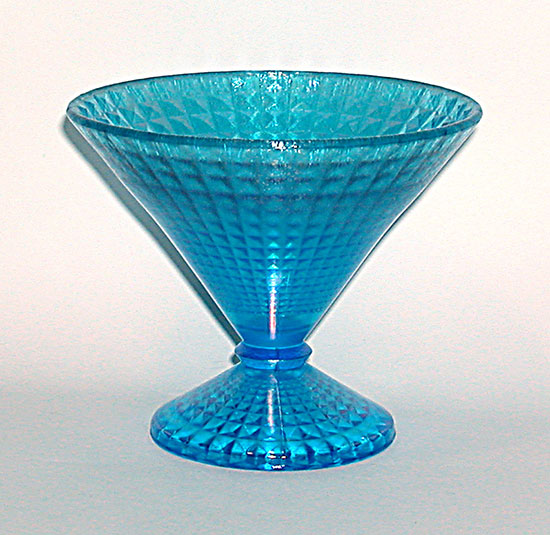
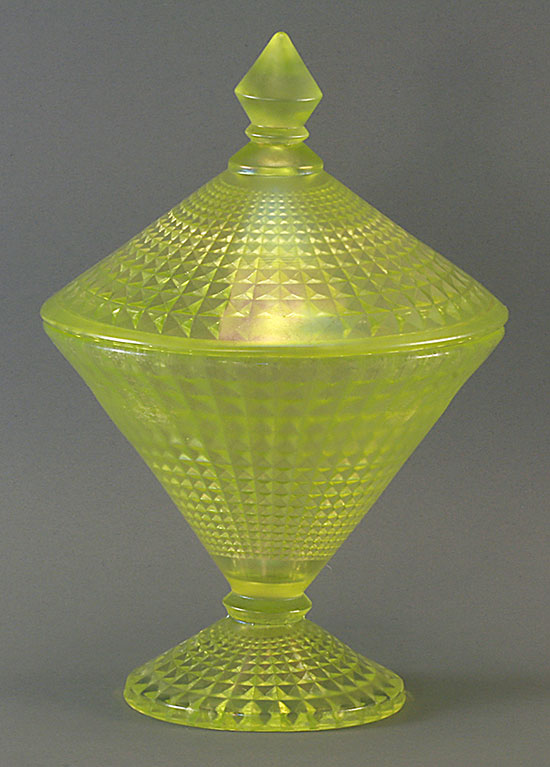
The fan vases are not overly difficult to find and the candy bottoms show up from time to time but finding a candy with its lid is more challenging. I often wonder if the designers and mold makers ever tried to actually hold onto the finials they put on their covers to candy jars, powder puff jars and the like. My guess is that consumers had difficulty with this finial and that has led to us having quite a few topless candy jars. You will recognize this candy jar, I call it ‘cone shaped’ because I don’t usually remember that it is #568, as also being available in this smaller size and a larger size without the diamond optics. To my knowledge, we have not found this larger candy jar with the diamond optics, but we would love to see one if you have it in your collection.
The last example I will share with you tonight is the Northwood guest set and tumbler.
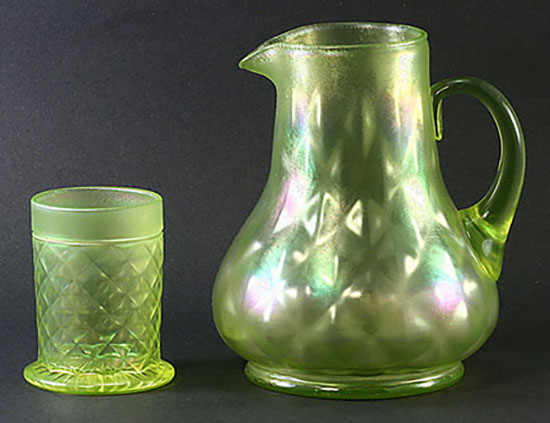
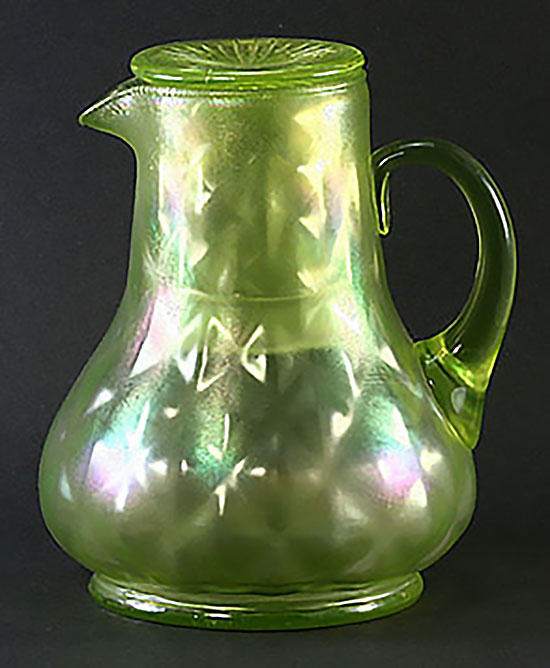
Dave showed you the vase made from this mold. With a little more work by the finisher, that vase becomes a guest set pitcher complete with an applied handle. The tumbler is interesting because this time Northwood put the diamonds on the outside, as they did with the ‘regular’ water tumblers. Interior diamonds on a tumbler would have been difficult to clean, so they just put them on the outside!
That’s my contribution to the world of iridescent diamonds. I’m enjoying all the photos you are sending in of the diamonds in carnival glass. I also collect Early American Pressed Glass, both flint and non-flint, and there is an abundance of diamonds on that glass. Some of those molds were used to make carnival glass so I’m seeing some familiar diamonds.
Before I wrap up, thank you for the messages of encouragement for Jeff and me. We are two weeks into recovery and he is doing great. He is up and about, has a good appetite and a good outlook. We recently went on an outing to the farmers’ market to buy plants for the patio planters. He enjoyed doing most of the selecting but not much of the carrying and he will probably not be doing much, if any, of the planting. Luckily we have Landon, a neighborhood teenager who is very helpful with projects like this so Jeff will get to supervise as Landon and I do the planting. Please keep those positive thoughts and prayers coming; we’ve got at least 4 more weeks to go before he is back to “normal.” I’m doing great also; we are at the point where I am able to get out and about to shop, go to the gym, etc.
